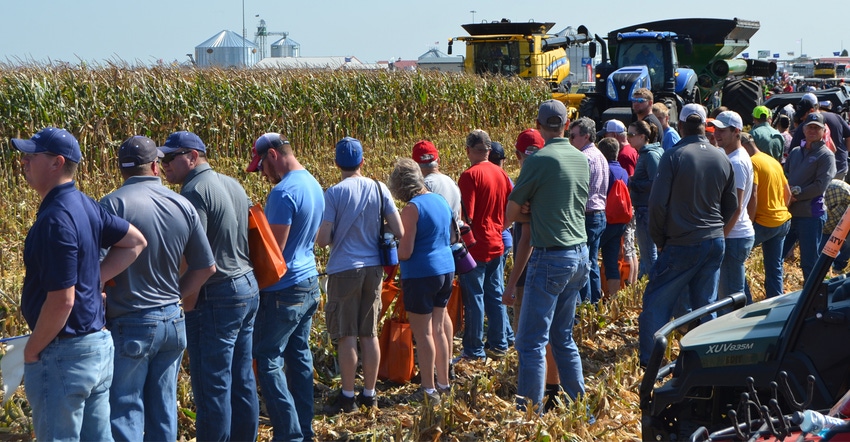
Grand Island has always been the home of Husker Harvest Days. In many ways, Grand Island and Husker Harvest Days have grown together over the past 42 years since the first dirt was moved at the show site in the fall of 1977.
The city had 33,180 residents in 1980, two years after HHD began, when the state fair was still in Lincoln and HHD was just getting off the ground.
Today, Grand Island is used to big crowds. It’s home to the Nebraska State Fair and other major events. And the latest census figures show a growing population of well over 51,000. That’s why the city knows how to roll out the welcome mat for HHD visitors.
Since the first HHD, the show has brought hundreds of thousands of people to the region. Last year, thanks to a $7.5 million upgrade of the show site funded by Farm Progress, the city of Grand Island, Hall County and Chief Industries, HHD seemed like an entirely new event.
20 years and counting
Informa, the parent company of Farm Progress and Husker Harvest Days, has committed to host the show in Grand Island for at least 20 years. As part of a major upgrade agreement with Informa, the Grand Island City Council voted unanimously to invest $2 million in the show site project over 10 years — or $200,000 each year.
“The fact that this kind of investment has been made in the show and the long-term commitment to host the show in Grand Island is truly appreciated,” says Cindy Johnson, president of the Grand Island Chamber of Commerce. “These improvements have made this the premiere show site once again.”
As HHD has expanded its exhibitor base and grown in size and scope, the economic impact of the show on the Grand Island business community has increased.
Six years ago, the Agriculture Institute of Nebraska commissioned the University of Nebraska Bureau of Business Research to develop an overall economic impact report of HHD on Grand Island and Hall County. The report, prepared by Eric Thompson, UNL director and associate professor of economics, delineates the various economic activities associated with HHD.
$7.6 million impact
The report found the total economic impact of HHD to be more than $7.6 million each year. With over 100,000 visitors attending the show yearly, the 2013 BBR report quantified the direct impact through business receipts totaling nearly $5 million, with an additional $2.6 million considered labor income. Johnson says that the impact is probably greater today.
“Grand Island is proud to be known as the home of Husker Harvest Days,” Johnson says. “We take our role as host community seriously. Farmers, agricultural producers and others from around the world travel to Grand Island to see new products, equipment and innovations. Visitors and vendors alike will be treated to warm hospitality and friendly people.”
In 2014, Husker Harvest Days and the Farm Progress Show, both owned by Informa, were listed together as the largest trade shows in the U.S. by the respected Trade Show News Network Top 250 Trade Show List, based on size of the show sites.
Johnson says the site renovations will amaze vendors and visitors alike this year. The infrastructure improvements to the showgrounds helped weatherproof the site from extreme events and protect high-tech equipment, which helps vendors and visitors experience the show more fully.
“It’s all about the experience,” Johnson says. “These improvements have enhanced that experience greatly for HHD visitors.”
About the Author(s)
You May Also Like






